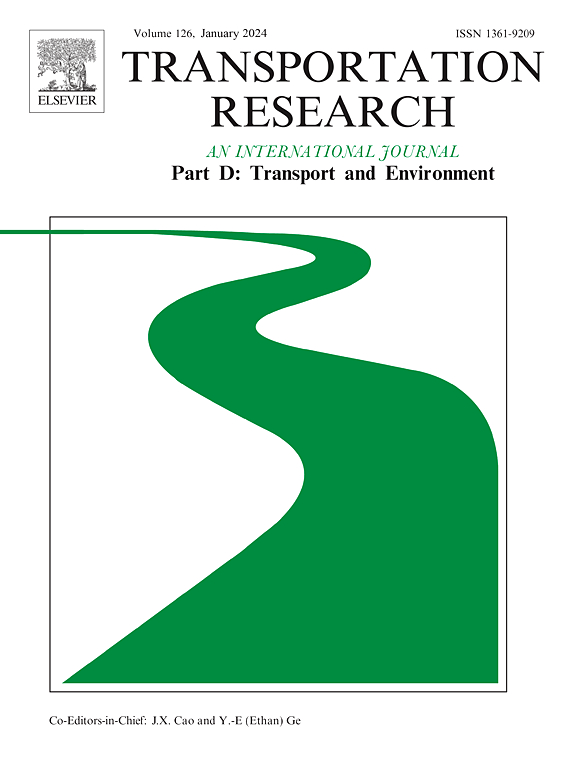确定电动汽车相关投资的优先社区
IF 7.7
1区 工程技术
Q1 ENVIRONMENTAL STUDIES
Transportation Research Part D-transport and Environment
Pub Date : 2025-09-06
DOI:10.1016/j.trd.2025.104979
引用次数: 0
摘要
我们开发了一个空间工具,以确定应该优先考虑电动汽车相关投资的社区。为此,我们将加利福尼亚州的人口普查区聚在一起,根据指标来估计插电式电动汽车(PEV)的需求、采用PEV的准备程度以及当前PEV的采用率。聚类识别我们定义为pev相关投资的第一、第二、第三或低优先级的区域。目前用于指导PEV投资的工具并没有设计用于确定PEV投资的区域。我们在本文中开发的方法,我们只设计考虑PEV,可能是指导PEV投资的更好方法。我们的分类大体上与国家确定的优先领域一致。然而,许多不被视为国家优先事项的社区可能是投资的优先事项,而在被视为国家优先事项的社区中,有些不是高度优先事项。本文章由计算机程序翻译,如有差异,请以英文原文为准。
Identifying communities that are a priority for electric vehicle related investments
We develop a spatial tool to identify communities that should be priorities for electric vehicle related investments. We do this by clustering census tracts in California based on metrics to estimate need for plug-electric vehicles (PEVs), readiness to adopt PEVs, and current PEV adoption rates. The clustering identifies tracts we define as a first, second, third, or low priority for PEV-related investments. Current tools used to direct PEV investments were not designed to identify tracts for PEV investments. The approach we develop in this paper, which we only designed to consider PEVs, could be a better method to direct PEV investments. Our classifications generally align with State identified priority tracts. However, many communities not considered priorities for the State may be priorities for investments, and among communities considered State priorities some are not high priority.
求助全文
通过发布文献求助,成功后即可免费获取论文全文。
去求助
来源期刊
CiteScore
14.40
自引率
9.20%
发文量
314
审稿时长
39 days
期刊介绍:
Transportation Research Part D: Transport and Environment focuses on original research exploring the environmental impacts of transportation, policy responses to these impacts, and their implications for transportation system design, planning, and management. The journal comprehensively covers the interaction between transportation and the environment, ranging from local effects on specific geographical areas to global implications such as natural resource depletion and atmospheric pollution.
We welcome research papers across all transportation modes, including maritime, air, and land transportation, assessing their environmental impacts broadly. Papers addressing both mobile aspects and transportation infrastructure are considered. The journal prioritizes empirical findings and policy responses of regulatory, planning, technical, or fiscal nature. Articles are policy-driven, accessible, and applicable to readers from diverse disciplines, emphasizing relevance and practicality. We encourage interdisciplinary submissions and welcome contributions from economically developing and advanced countries alike, reflecting our international orientation.

 求助内容:
求助内容: 应助结果提醒方式:
应助结果提醒方式:


